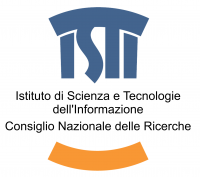Andrea D’Andrea, Sorin Hermon, Franco Niccolucci
“Extending ourselves. Computational Science, Empiricism, and Scientific Method” is a title of an interesting book edited in 2004 by P. Humphrey. The book contains a philosophical account on the modern computation techniques allowing the implementation of virtual hybrid scenarios tailored to human cognitive capacities.
From many years also archaeologists investigate virtual environments to test different theories and alternative hypothesis. The modelling of archaeological sites by means of computer-based methods provides new ways to represent and explore the past. Computer graphics, digital devices and three-dimensional modelling techniques extend the abilities of archaeologists to visually reconstruct ancient civilisations.
Although Virtual Archaeological is not a novelty in the panorama of archaeological approaches there is no agreement on the minimal parameters necessary to rebuild an ancient context, nor which requirements are needed to guarantee the accuracy and the effectiveness of the reconstruction; the strength of a model is based mainly on the capacity of the archaeologist to control the final results in terms of interpretative proposals and hypothesis. Mathematical approaches are largely used to provide complex models to be investigated. Computing capacity substitutes the archaeological observation and increasingly artificial worlds are the final outcomes of social inquiries. From this point of view, archaeologists need to participate in large interdisciplinary teams including computer sciences, mathematicians and, sometimes, sociologists, and to adopt a different approach to the data organization and processing. In this field archaeologists are frequently influenced more than ever from the black-box surely more than in the past when data were processed by DBs and GIS.
What are the lessons learned by archaeologists so far? Did they change their way to acquired, encoded and managed data? Or rather did they change their models, theories, approaches to the archaeological reconstruction and visualisation? Did they improve their capacity in computer graphics, computational knowledges, or mathematical competences? What is the contribution of such approaches to the advancement of archaeological methodology and how far are they from the traditional way of investigating the past?
The session aims at exploring how archaeologists perform their work in virtual/computational environments, how they codify their data, or their description of the archaeological findings. The proposal is not addressed to understand how the traditional interpretation or theories can be improved or radically changed thanks to the computational capacities. The session intends to highlight the perspectives of a new methodology in archaeology well-aware on the importance of digital techniques. In such a hybrid scenario, not totally carried out by computers, the archaeologists are testing new tasks and new field of visual observations. Computational laboratory can push toward a paradigmatic change in archaeology, but are archaeologists mature enough for this challenge?


